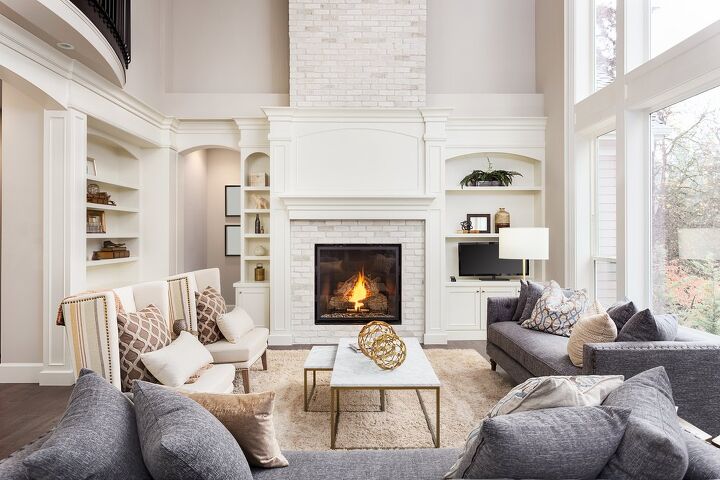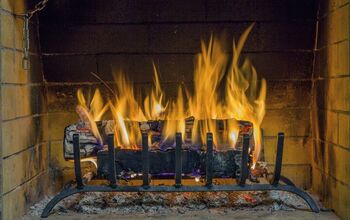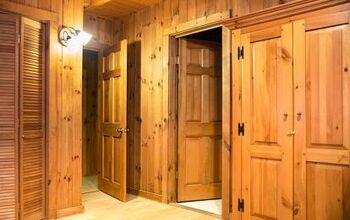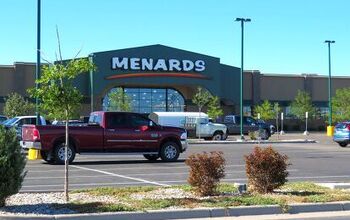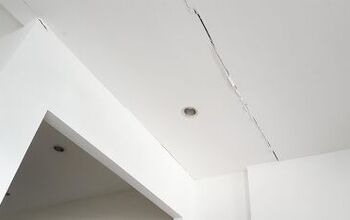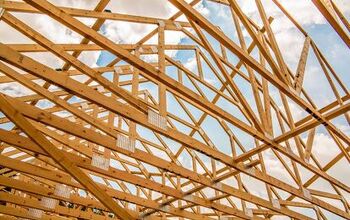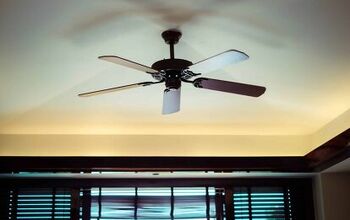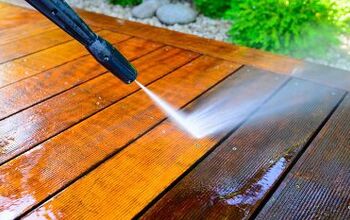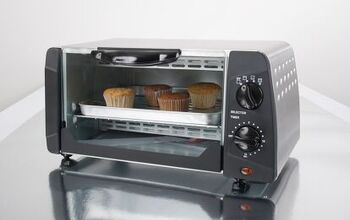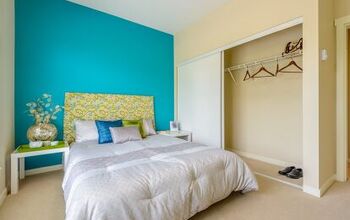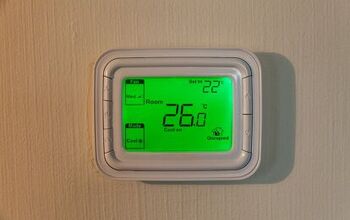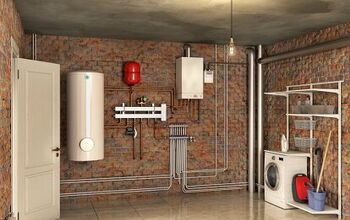Fireplace Size Vs. Room Size: How To Tell What You Need

Sitting in front of a warm fireplace in the winter is one of the coziest activities you can enjoy. If you live in an area with harsh winters a fireplace can transform how you feel about the coldest season. If you are looking to install a fireplace in your home to enjoy all of these benefits, you are probably asking yourself how big your fireplace should be to look great and keep your home warm.
When deciding how big to build your fireplace you need to measure the length, width, and height of the room involved. This will give you the volume of the room and will help you calculate the amount of heat needed and the fireplace size required to generate it. You also need to factor in your home’s age, the climate, and the room design.
In order to determine the exact size fireplace you need, you need to take a few measurements and get to know your house. A fireplace is only as effective as the room you build it in allows. Luckily there are several simple rules of thumb and formulas below. These will help guide you in picking the perfect size fireplace for your home.
The Best Ways To Calculate Fireplace Size to Room Size
There are several ways to determine the perfect size fireplace for each size room. If you are using a fireplace for its classical intention, for heat, then you must calculate its heat output. You can calculate how large your fireplace should be to heat any sized room using a basic mathematical formula.
If you are using your fireplace for more ornamental purposes, with heat being an added bonus, there is a lot more wiggle room for creativity and size variation. There are, however, still several rules of thumb you should follow to make sure your new fireplace fits perfectly into the desired room.
Calculating Fireplace Heat Output (BTUs)
In order to know how large of a fireplace you will need, you need to understand how much heat is needed in the room you are putting it in. The first step is to find out the volume of the room in question.
To calculate the volume of the room you need to multiply the length of the room by the width and the height. Length times width times height equals volume. Once you have that number, multiply it by 4. The result will be the minimum heat output of that room in what are called British Thermal Units, or BTUs.
Once you have your minimum BTU number you need to find a fireplace that can output that much heat. You can find this out based on the manufacturer of your specific fireplace, or by doing further calculations. The type of fireplace (gas, wood, electric) matters when it comes to BTUs so there is no simple answer in that department.
Calculating Fireplace Size When Heat Is Not A Concern
While heat is a great perk of a fireplace, very few homes rely solely on fireplaces to stay warm. If you are less concerned about the room temperature and more concerned with the design aesthetic, there are a few basic design principles and safety issues to note.
One good rule of thumb is to consider the overall width (one end of the fireplace to the other) and divide that number by two. Once you have that number, you can use it as a ruler. Use the center of the fireplace as a starting point, and make sure there is no obtrusion (window, fixture, shelf, or wall) any closer than that. This ensures you have enough space around the fireplace.
It is also good to know common fireplace sizes when you are deciding how big your fireplace should be.
Common Fireplace Sizes
The average fireplace size always depends on several factors. The size and stature of the rooms is always the main consideration. After all, an “average” size fireplace in a New York City apartment will not be the same as an “average” size fireplace in a British castle.
There are, however, statistical averages for your typical fireplaces. These measurements can help guide you to see if you are heading in the right direction.
The Average Fireplace Size
The typical fireplace size in a standard American home is around 36 inches by 30 inches. These dimensions are the overall average sized fireplace in an American home. A fireplace of this size will typically have a heat output of between 25,000 and 30,000 BTUs.
Small Fireplaces
Small fireplaces are common in smaller rooms and cabins. Smaller fireplaces are also becoming more common in spaces where they exist for aesthetics rather than to functionally heat a room. Small fireplaces are typically two feet by two feet. They typically can give off heat of about 10,000 to upwards of 18,000 BTUs.
Large Fireplaces
Large fireplaces are, not surprisingly, often found in larger rooms. They are often the centerpiece of a room, giving the space a “wow” factor. In order to be considered a “large” fireplace the unit will likely be at least 45 inches wide by at least 30 inches tall. These fireplaces give upwards of 35,000 BTUs.
There are significantly larger fireplaces than that, and you can find out exactly how much BTUs they will give off doing simple measurements and calculations.
Other Factors To Consider When Calculating Fireplace Size
Room size is certainly a critical factor when you are mapping out your room design and the size of your fireplace. There are, however, several other factors to consider in addition to room size formulas and basic temperature guides. Homes are unique, which means all their special characteristics need to be weighed and factored in accordingly.
Climate
If you are using a fireplace as a primary heat source then climate will play a large role in determining how large your fireplace should be. If you live in a climate that dips into cold temperatures in the winter and you have a wood or gas fireplace – size matters. Typically you will need a large gas or wood fireplaces to heat a home, rather than a small unit.
If however, you have an electric fireplace, the size of your fireplace matters very little as you will have the same heat output regardless of the size. If you are going with an electrical fireplace, choose whatever design works best for the room.
Does The Room Have Windows?
Windows, no matter how well insulated, are conductors. That means they will suck heat out of the room. Some windows, like double-paned windows, greatly cut down on heat loss. Still, the number, type and size of windows in the room where you will put a fireplace matters.
You can use online BTU calculators to get a good idea as to how much additional heat output you will need based on the number and size of the windows you have in your home.
The Age Of Your Home
Your home’s age can also play a role in how large the new fireplace in your home should be. Older homes are often considered anything built before 1990. The reason for this is homes built before 1990 often lack quality modern insulation.
Therefore, if your house was built before 1990 you may need to calculate this into the size of your fireplace, and possibly go slightly bigger. If your home was built after 1990 your home is likely well insulated and will retain the heat from the fire.
Design Of The Home
Your home and its overall design will affect how large your fireplace should be. It will also determine how effectively it will heat your home. For example, if you live in a one room home you will plan your fireplace differently than if there are several smaller rooms.
Additionally, if the room with the fireplace is above or below a heated room, it likely will require less heat to achieve its goal temperature, as some of the work is already done.
Fireplace Size vs. Television Size
It is important to understand how fireplaces and televisions are measured when you map out your wall design. While this may seem straightforward, televisions and fireplaces are actually measured differently.
Televisions are measured diagonally from corner to corner. This means to get the proper measurement of a television you would measure from the bottom left corner of the television to the top right corner.
Fireplaces, however, are measured differently. Fireplace width is the simple width from one side to the other – not a diagonal. Now that you understand how the two types are measured, you can choose the correct corresponding sizes for your plan.
Common Size Of TVs and Typical Corresponding Fireplace Size
Aesthetically, Televisions, no matter their size, should be taller than the corresponding fireplace below. Typically, due to height constrictions on the wall, most fireplaces beneath televisions are around 16 inches tall. You want the width of the fireplace to be the same width as the television in order to create symmetry.
If you have a large TV, say above 65 inches, you may want to make the fireplace even wider than the television – this helps balance out and compensate for the fact that the television is much taller than the fireplace. This will create a sense of balance even though you can’t have perfect symmetry.
How Big Should My Fireplace Hearth Be?
A fireplace hearth is an area that extends outside of the fireplace itself. Some gas fireplaces don’t require them. Regardless, they are still fairly standard. It exists on most functional fireplaces, and acts as a barrier between your home and the fire. It protects from heat damage and keeps anything flammable at a safe distance.
The average size of a fireplace hearth is around 16 inches outwards. The hearth also typically extends 8 inches on both sides of the fireplace. As always, look into building code to see what type of hearth or other fire safety requirements your fireplace requires.
Wrapping it Up
When you prepare to install a fireplace, you need to take some measurements before you choose the perfect size. If you are using your fireplace to heat the room you need to get the room’s measurements. Next, you can use a simple formula to calculate the heat output (BTUs) you will need to heat the space.
Make sure you factor in your home’s age, the number of windows, and your climate when deciding on a fireplace. There are also several rules of thumb for fireplace design. Be sure your fireplace is a safe distance from walls and cabinets before you start building.

Tom Gaffey is an expert writer who currently resides in Washington D.C. Tom has a passion for real estate and home improvement writing, as well as travel and lifestyle writing. He lived the last twelve years in Hawaii where he worked closely with luxury resorts and event planners, mastering his knowledge of aesthetics and luxury products. This is where he found his passion for home improvement and a keen interest in DIY projects. Currently, Tom resides in Washington D.C, and also working on his debut fiction novel.
More by Tom Gaffey



